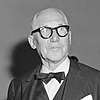Related Research Articles

Charles-Édouard Jeanneret, known as Le Corbusier, was a Swiss-French architect, designer, painter, urban planner and writer, who was one of the pioneers of what is now regarded as modern architecture. He was born in Switzerland to French speaking Swiss parents, and acquired French nationality by naturalization on 19 September 1930. His career spanned five decades, in which he designed buildings in Europe, Japan, India, as well as North and South America. He considered that "the roots of modern architecture are to be found in Viollet-le-Duc".
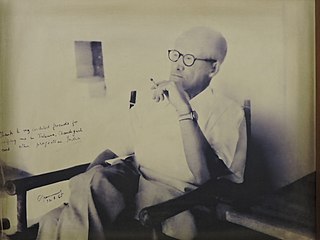
Pierre Jeanneret was a Swiss architect who collaborated with his cousin, Charles-Édouard Jeanneret, for about twenty years.

Charlotte Perriand was a French architect and designer. Her work aimed to create functional living spaces in the belief that better design helps in creating a better society. In her article "L'Art de Vivre" from 1981 she states "The extension of the art of dwelling is the art of living — living in harmony with man's deepest drives and with his adopted or fabricated environment." Charlotte liked to take her time in a space before starting the design process. In Perriand's Autobiography, "Charlotte Perriand: A Life of Creation", she states: "I like being alone when I visit a country or historic site. I like being bathed in its atmosphere, feeling in direct contact with the place without the intrusion of a third party." Her approach to design includes taking in the site and appreciating it for what it is. Perriand felt she connected with any site she was working with or just visiting she enjoyed the living things and would reminisce on a site that was presumed dead.
José R. Oubrerie was a French architect, educator, and author. He was a protégé of Le Corbusier.

Villa Jeanneret and Villa La Roche are two houses in Paris, designed by Le Corbusier and Pierre Jeanneret in 1923-1925 and renovated by Charlotte Perriand in 1928. No longer inhabited, they house the Fondation Le Corbusier museum and archives. They are located at 8-10 square du Docteur-Blanche, 16th arrondissement, Paris. Villa Jeanneret is not open to the public.

The Villa Jeanneret-Perret is the first independent project by Swiss architect Le Corbusier. Built in 1912 in La Chaux-de-Fonds, Charles-Edouard Jeanneret's hometown, it was designed for his parents. Open to the public since 2005, the house is under the patronage of the Swiss National Commission for UNESCO and has been proposed by the Swiss Government for inscription on the World Heritage List.

Tim Benton is Professor Emeritus in the History of Art at the Open University in the UK as well as a writer and broadcaster. He has also taught at Columbia University, Williams College, and École Polytechnique Fédérale de Lausanne. He has written extensively on the modernist architect Le Corbusier. A large collection of photographs by Tim Benton is held in the Courtauld Institute of Art's Conway Library archive, which is currently undergoing a digitisation project.
Georges-Henri Pingusson was a French architect.
Established in 1989 by Patrick and Laurence Seguin, the Galerie Patrick Seguin is an art gallery in Paris's La Bastille district. Ateliers Jean Nouvel has designed its current space.
Villa Meyer (1925–1926) is an unbuilt project which was supposed to be built in Neuilly-sur-Seine, in downtown Paris. Four designs were created for this house by Swiss architect Le Corbusier, but it was never built. This is the first project into which Le Corbusier incorporated "free plan" and "free facade" into his design. These ideas later become two of Corbusier's famous Five Points of Architecture. Domino Frame is also an outcome of this experimental design, which became the dominant design concept of Corbusier's later works.

Villa La Roche, also Maison La Roche, is a house in Paris, designed by Le Corbusier and his cousin Pierre Jeanneret in 1923–1925. It was designed for Raoul La Roche, a Swiss banker from Basel and collector of avant-garde art. Villa La Roche now houses the Fondation Le Corbusier.
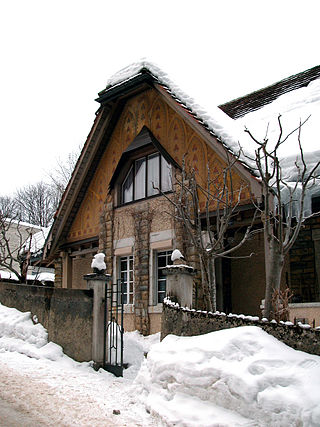
Villa Fallet is a traditional chalet located in La Chaux-de-Fonds, Switzerland designed and built by the eighteen-year-old Charles-Édouard Jeanneret (1887–1965), who later became better known as Le Corbusier. Jeanneret was teaching himself architecture by going to the library to read about architecture and philosophy, by visiting museums, by sketching buildings, and by constructing them. In 1905, he and two other students, under the supervision of their teacher, René Chapallaz, designed and built his first house, the Villa Fallet, for the engraver Louis Fallet, a friend of another of his teachers, Charles l'Eplattenier. The house is in the Style Sapin, the Swiss variant of Art Nouveau.
The Cité Frugès de Pessac(the Frugès Estate of Pessac), or Les Quartiers Modernes Frugès, is a housing development located in Pessac, a suburb of Bordeaux, France. It was commissioned by the industrialist Henri Frugès in 1924 as worker housing and designed by architects Le Corbusier and Pierre Jeanneret, who were responsible for the development's masterplan and individual buildings. It was intended as a testing ground for the ideas Le Corbusier had expressed in his 1922 manifesto Vers une Architecture and was his first attempt designing low-cost, mass-produced collective housing in his trademark aesthetic. Drawings of some of the buildings were subsequently included in the second edition of the text.
Le Corbusier's Five Points of Architecture is an architecture manifesto conceived by architect, Le Corbusier. It outlines five key principles of design that he considered to be the foundations of the modern architectural discipline, which would be expressed through much of his designs.
Le Corbusier's Furniture is a classic furniture line created by Le Corbusier. The line was introduced in 1928 at the Salon d‘Autumne in Paris.
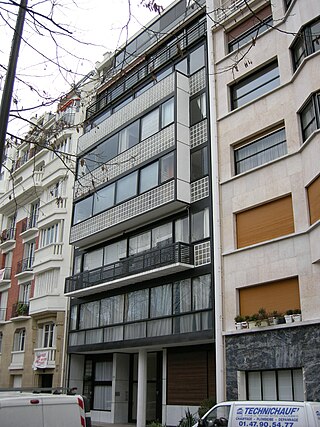
Immeuble Molitor is an apartment building designed by Le Corbusier and Pierre Jeanneret and built between 1931 and 1934. Located at the border between the city of Paris and the commune of Boulogne-Billancourt in France, it has been listed along with 16 other architectural works by Le Corbusier as a UNESCO World Heritage Site. Le Corbusier lived in the building from its completion until his death in 1965.
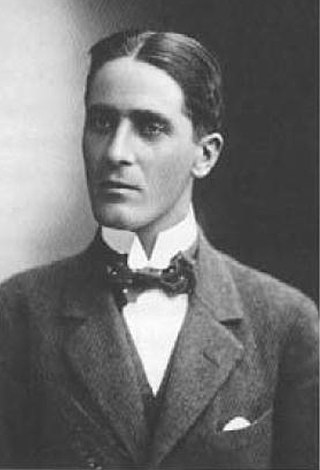
Raoul Albert La Roche was a Swiss banker and art collector. He was especially interested in purism and cubism and his collections have been donated to museums in Switzerland and France. His home in Paris, Maison La Roche, was designed by his friend Le Corbusier and now houses the Le Corbusier Foundation.

The Villa Le Lac, also known as the Villa "Le Lac" Le Corbusier, is a residential building on Lake Geneva in Corseaux, Canton of Vaud, Switzerland, designed by Swiss architects and cousins Le Corbusier and Pierre Jeanneret between 1923 and 1924 for Le Corbusier's parents. It is an example of residential Modern architecture and showcases three of Le Corbusier's Five Points of Architecture. The building is a designated Swiss Cultural Property of National Significance and was added to the UNESCO World Heritage List in 2016.
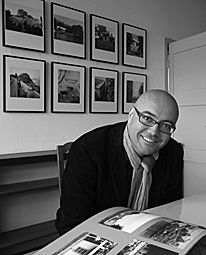
Patrick Moser is a Swiss writer, translator, art historian, and museologist. He is the founder and curator of the Museum "Le Lac" Le Corbusier.
References
- ↑ "Restauration de la Maison La Roche" (in French). Fondation Le Corbusier. Archived from the original on 2014-01-03. Retrieved 2014-02-06.
- ↑ "Fondation Le corbusier". Archived from the original on 2010-02-26. Retrieved 2008-06-28.
- ↑ "Fondation Le Corbusier". www.paris.org. Archived from the original on 2005-02-04.
